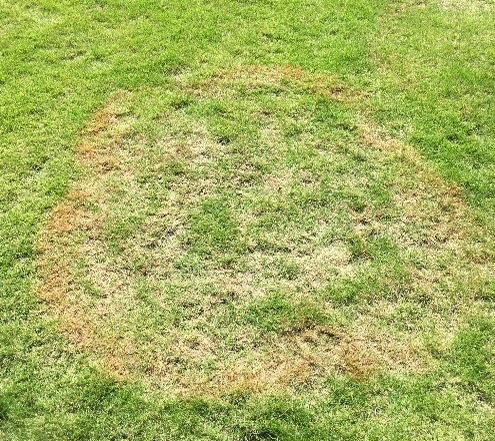Home /
Learn /
Blogs /
Be On the Lookout: Large Patch Symptoms Now Showing!
Be On the Lookout: Large Patch Symptoms Now Showing!
This disease was formerly called Brown Patch, which is a disease that affects cool-season grasses in the middle of the summer. It is basically the same disease, but Large Patch begins the infection process in the fall and the symptoms show in the late spring early summer. Brown Patch begins to infect cool-season grasses during periods of high heat and humidity and the symptoms immediately show on the lawn.

Large Patch begins to develop when soil temperatures drop to about 70 degrees in the fall. The symptoms of the disease may show in the fall, but more likely they will show during the spring of the following year, especially during cool, wet periods. The symptoms become very noticeable as these grasses start greening up.
Large patch is more likely to show up on lawns that receive excessive nitrogen fertilization in the fall and spring, have excessive thatch layers, have been over-watered or been mowed too low. Centipede-grass is most susceptible to the disease, followed by Zoysia, St Augustine and Bermuda-grass. Bermuda-grass is rarely affected by the disease and will quickly recover if it does get the disease.
Following good cultural practices of proper mowing, deep and infrequent watering, proper fertilization and annual core aeration will help prevent the disease from occurring. Avoid fertilizing the lawn after the middle of September and don’t fertilize until the grasses begin greening up in the spring.
There are fungicides that work very well on these diseases, but require two applications in the fall, 30 days apart, when soil temperatures drop to below 70 degrees. The easiest way to check the soil temperature is with a digital meat thermometer, pushed in the ground about two inches in four or five locations throughout the lawn and then average out the temperature readings.
If you think that your lawn may have Large Patch, contact your local Spring-Green office to have your lawn evaluated. They can help develop a program that will benefit your lawn and help to prevent the re-occurrence of Large Patch.